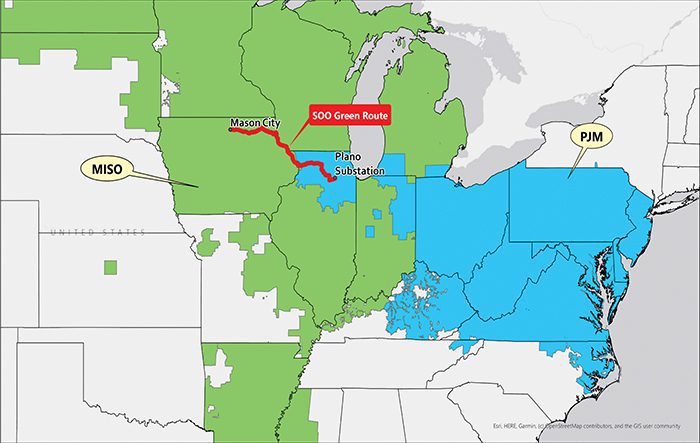The Future Electric Grid: How HVDC Could Transform the U.S. Power System
https://www.powermag.com/the-future-electric-grid-how-hvdc-could-transform-the-u-s-power-system/August 2, 2021
...One project that is basically doing what Bloom suggested is the SOO Green HVDC Link. SOO Green is a company owned by investment funds managed by Copenhagen Infrastructure Partners, Siemens Energy, and Jingoli Power. The SOO Green HVDC Link will connect the company’s converter station in northern Iowa to its Illinois converter station just west of Chicago, roughly 350 miles away (Figure 2). It will use paired 525-kV cross-linked polyethylene-class cables installed underground primarily along existing railroad rights-of-way to make the connection. Minneapolis, Minnesota-based Direct Connect Development Company is heading the project.

During the ARPA-E session, Trey Ward, CEO of Direct Connect, provided specifics about the project. “[SOO Green] is the first transmission project in the U.S., that’s going to be co-located underground along railroads and highways for its entire 350-mile route. So, we don’t need eminent domain to secure right-of-way for our transmission line,” he explained.
“It’s just two slender cables that are buried in railroad right-of-way, and each cable is no bigger around than a wine bottle. So, it’s really out of sight and out of mind. And what this does is it avoids landowner opposition, and it expedites the permitting because there’s no avian or viewshed impacts....